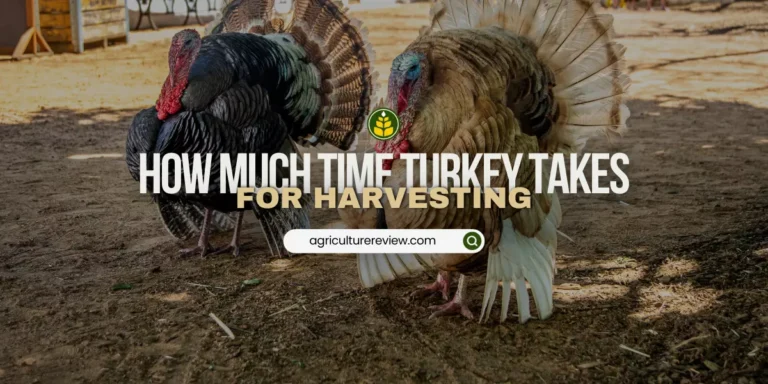Cocoa is a cash crop that is cultivated widely for getting cacao seeds from their fruits. These cocoa seeds are dried & fermented completely to convert them into cocoa beans or cacao. From these fermented seeds cocoa solids and cocoa butter can be extracted. As it is a cash crop, therefore farmers can plant them over a large area to earn high profits.
From one acre of cocoa farm, a farmer can earn up to 60 thousand Indian rupees. However, cocoa farming can be more profitable if farmers start producing various products derived from cocoa beans. As there is high demand for cocoa products such as chocolate, butter and powder, you can sell your produce easily.
Table of Contents
Introduction
Cocoa botanically known as Theobroma cacao is a tropical evergreen tree native to the rainforests of Central & South America. Cocoa trees typically grow to a height of 15 to 25 feet and have glossy, dark green leaves. The tree bears small flowers on directly on its trunk and branches, which develop into large, football-shaped pods. Inside these pods, cocoa beans are present.
The cultivation of cocoa trees plays a significant role in the global chocolate industry and has cultural and economic importance in many cocoa-producing countries. In 2021 the global cocoa market was estimated at US $ 47.1 Billion and it is expected to reach US $ 68.2 Billion by 2030.

Companies such as Nestle, Barry Callebaut AG, AMUL, Cargill, Blommer Chocolate Company, etc. are some of the largeest chocolate processing companies in the world. You can also connect the cocoa processing companies for selling your produce regularly or sign a contract farming for long term profit.
Area & Production
From 2021 to 2022, around 4.9 million tonnes of cocoa was produced in the world. Côte d’Ivoire is the largest cocoa producing country in the world, around 2.2 million tonnes of cocoa was produced in Côte d’Ivoire. It is followed by Ghana, Indonesia, Nigeria, Ecuador, Cameroon, Brazil, Sierra Leone, Peru, etc.
Côte d’Ivoire & Ghana together contibute for more than 60% of the global cocoa production. India is the 16th largest cocoa producing country in the world with total production of about 28,300 tonnes of cocoa.
READ MORE: Top Cocoa Producing States In India
Cocoa Farming Guide
Follow these guidelines carefully to practice cocoa farming in your farm.

Climate & Temperature
You can cultivate cocoa in warm and humid climatic conditions where temperature ranges from 15 to 35o Celsius. Avoid planting cocoa crop in areas where temperature fall below 15o Celsius as it can seriously affect the production. It can be cultivated at altitudes upto 1200 meters above Mean Sea Level with an annual rainfall of 1000 mm to 2000 mm & a relative humidity of 80%.
Soil
Cocoa crop can be cultivated in wide range of soils, but deep, well drained red laterite soils or clayey loam to sandy loam soils with pH around 4.5 to 8.0 is considered ideal for its cultivation. Avoid planting them in poorly drained soils as it can damage the growth of the plant.
Varieties
There are three main varieties of cocoa, these are Criollo, Forastero and Trinitario. Forastero is the most widely cultivated variety of cocoa in the world. Around 80 to 90% of the cultivated cocoa is Forastero. However, the Criollo variety is the rarest as they are susceptible to pests & diseases but are known for their unique, delicious flavor.
Venezuela is a major producer of the Criollo variety in the world. Trinitario is a hybrid developed by crossing Forastero and Criollo. It is more resistant to pests and diseases than Criollo and is of better quality than Forastero. In Indian conditions, the Forastero variety performs well.
Propagation
Cocoa can be propagated by seeds, patch budding and softwood grafting. To maintain the true type, it is advisable to propagate asexually, i.e., by patch budding and softwood grafting. For propagating by patch budding, take 10-12 months old rootstock & bud patch of 2.5 centimeters in length and 0.5 centimeters in width from the bud wood for budding.
To propagate by softwood grafting, take a 3-4 months old and Scion stick of 12- 15 centimeters in length with 2- 3 buds for grafting.
Planting Time & Method
Cocoa seedlings can be planted either from May to June or in September. However, you can not plant cocoa directly in an open field as it is a shade-loving plant and requires 50% shade during the seedling stage and 40% shade during maturity.
Therefore to provide shade you can plant them as an intercrop with coconut, arecanut or oil palm. Select healthy, at least 4 to 6 months old seedlings or grafted or budded plants for plantation and follow these spacing guidelines.
| Main Crop | Spacing (Meter) | Cocoa (Intercrop) |
|---|---|---|
| Coconut | 7.5 x 7.5 | Plant coconut at spacing of 7.5 meters from each other, between two rows of coconut, plant a row of cocoa in between at 3 meters spacing from coconut trees on both sides and plant one cocoa tree at 3 meters spacing from coconut tree in the coconut row. |
| Oil Palm | 4.5 x 4.5 | Likewise, plant oil palm trees at pacing of 4.5 meters from each other, between two rows of oil plam tree, plant a row of cocoa in between at 2 meters spacing from oil palm trees on both sides and plant one cocoa tree at 2 meters spacing from oil palm tree in the oil main palm row. |
| Areca Nut | 2.7 x 2.7 | However, there is a slight difference when you plant with arecanut, plant arecanut seedlings at a spacing of 2.7 meters and at the center of two Arecanut rows you can plant one cocoa row at a spacing of 5.4 meters from each other. |
To plant cocoa seedlings, prepare pits of (50 x 50 x 50) centimeters and leave them for a month. At plantation time, plant healthy cocoa seedlings and fill pits with 15 to 20 Kilograms of organic manure or Farm Yard Manure.
Irrigation
Cocoa is a drought sensitive crop, therefore irrigation is essential during the dry summer season. During the first two years of crop growth, you can irrigate at an interval of 4 to 7 days depending on local weather conditions. During dry summer days irrigate after every four days and during cold winter, irrigate after every 7 days.
You can also adopt drip irrigation system to irrigate cocoa plants. It will also help in fertigation to supply esssential nutrients required for the growth of cocoa plants. Through drip irrigation, you will need to give 20 liters of water per plant per day.
Fertilizers
For sustainable cocoa farming, you can select organic fertilizers to provide nutrition to cocoa plants. Each cocoa plant requires 8 to 10 Kilograms of well rotten Farm Yard Manure in two split dozes every year. Along with this you will need to add 2 Kilograms of bonemeal per plant. Apply the first doze during April to May and second doze during September to October.
Farmers can also use cow dung manure for fertilizing cocoa plants. Apply fertilizers in around 30 centimeters radius of the plant in the first year and keep increasing radius gradually up to 150 centimeters after third year. If you want to apply inorganic fertilizers, then you can add 72 grams of urea, 65 grams of rock phosphate and 77 grams of muriate of potash per plant during the first year.
From the third year apply 220 grams of urea, 200 grams of rock phosphate and 230 grams of muriate of potash per plant in two split dozes.
Training & Pruning
For successful cocoa farming, training and pruning are done to maintain the shape of the plant, remove dead and diseased branches, improve light infiltration and air circulation and maximize the nutrient distribution towards pods. Pruning is done twice a year, first from April to June after harvesting and second from November to December.
In young plants of 2 years, remove all the secondary branches below 1 meter height of the plant. Keep 3 to 4 fan branches above this height for better light penetration and humidity control within the canopy. Remove the diseased branches and dispose them at a far distance from the field. You can leave the old and healthy pruned branches to rot in the farm, as they will be converted to manure.
Pests of Cocoa
Follow these guidelines to control pests in your cocoa farm.
| Pests Of Cocoa | Control Methods |
|---|---|
| Mealy Bugs | Spray Neem Oil 3% or fish oil rosin soap 25g/litre (Organic) or spray Dimethoate (2 ml/litre) or Profenophos (2 ml/litre) or Chlorpyriphos (5 ml/litre). |
| Aphids | Spray Neem oil 3% or dimethoate 2 ml diluted in 1 liter water. |
| Tea Mosquitoe Bugs | Spray Neem oil 3% or spray Imidacloprid (0.6 ml/lit) , Thiamethoxam (0.6g/litre). |
| Flatid Plant Hoppers | Foliar spray of Thiacloprid @ 2 ml/litre twice at 5 days interval. |
| Hairy Caterpillars | Foliar spray of acephate 2 grams diluted in a litre of water. |
| Stem Girdler | Injection of dichlorvas (DDVP) + monocrotophos solution into bore holes after removing the webs, seal the holes with clay after application. |
| Rats & Squirrels | Place 10 g bromadiolone (0.005%) wax cakes or ripe banana stuffed with carbofuran on the cocoa trees. |
Diseases of Cocoa
Follow these guidelines to control diseases in your cocoa farm.
| Diseases Of Cocoa | Control Methods |
|---|---|
| Seedling Blight | Spray 1% Bordeaux mixture or 0.2% copper oxychloride. |
| Black Pod Rot | Spray 1% Bordeaux mixture and 0.5% Pseudomonas fluorescens liquid formulations as soil and foliar spray thrice in a year. |
| Stem Canker | Remove the diseased part of the bark and apply Bordeaux mixture or copper oxychloride paste. |
| Vascular Streak Dieback | Dispose the diseases branches at far distance from the farm. |
Harvesting of Cocoa
Flower production in cocoa trees starts from 3rd year after plantation and you can get commercial yield after 5 years of plantation. It takes around 120 to 140 days for pods to become mature for harvesting. Green pods turn yellow, while red pods turn orange at maturity. You can harvest pods during maturity at regular intervals of 10 to 15 days, and avoid over ripening of pods.
Yield Of Cocoa
From one cocoa tree you will get up to 50 to 70 pods every year. Each pods contain around 40 cocoa beans. Around 500 cocoa beans are required to make 1 pound of chocolate.





